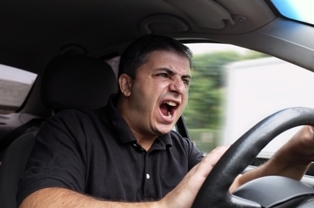Busy roads, tight schedules, and the mistakes of other drivers can be frustrating and make driving an unpleasant experience. Some drivers respond with anger, feel road rage, and occasionally want to harm or intimidate others on the road. This is known as aggressive driving, and it puts other drivers at risk and causes a large number of deaths on U.S. roads each year. It’s important to understand how Virginia legally defines aggressive driving, how it manifests, why it happens, and how you can avoid a run-in with an aggressive driver. 
How Virginia Code Defines Aggressive Driving
Virginia very specifically outlines the behaviors and actions that constitute an instance of aggressive driving—in Virginia Code, Chapter 8: Regulation of Traffic. To have legally committed an act of aggressive driving, a person must:
- Break specific road laws
- Pose a hazard to other drivers
- Intend to harass, intimidate, injure, or obstruct another driver.
If you are involved in an aggressive driving accident, you need an attorney to help you gather evidence supporting your claim that the offender committed every part of this legal definition.
What Aggressive Driving Looks Like
Although 80 percent of drivers perceive aggressive driving as “serious” or “extremely serious,” according to the AAA Foundation, many drivers admit to perpetrating the same violations they see as aggressive. Common behaviors associated with aggressive driving include:
- Speeding
- Tailgating or following too closely
- Intentionally driving slowly in the passing lane
- Honking
- Intentionally cutting off another driver
- Yelling
- Driving too fast or erratically in dangerous weather conditions
- Giving inappropriate gestures
- Making sudden, intentional stops
- Weaving in and out of traffic
- Faking swerves
- Driving the wrong way
- Running red lights or stop signs
Even if a driver commits only one of these acts, and a lawyer can show he created a hazard and had intent to harm, the driver could be held liable for any injuries and damages he caused.
The Science Behind Aggressive Driving
Studies have found that both psychological and biological factors contribute to aggressive tendencies in drivers. These factors include genetics, brain chemistry, and mental health issues. Additionally, people who self-identify as having a high level of anger may create a higher risk on the road because they tend to:
- Take more risks
- Make more impulsive decisions
- Have aggressive thoughts toward others
- Are quick to anger
However, day-to-day environmental aspects can also exacerbate a person’s tendency toward aggression on the roadways, including high life stress, crowded roads, another driver’s mistakes, and being busy.
Additionally, it’s common that aggressive driving produces a sort of chain reaction. One driver may act out inappropriately, which causes another incident, and so on. Researchers speculate that this happens simply because some drivers overreact, or others may perceive even a driving mistake as an intentional threat.
How to Avoid an Aggressive Driving Accident
Aggressive drivers pose a serious threat to road safety, so it’s important you know how to respond to and avoid an aggressive driver should you or someone close to you become a target. When in the vicinity of an aggressive driver:
- Call law enforcement. If someone is actively endangering others, it’s important you inform police, so they can extinguish the threat as soon as possible. Not only can police break up any existing tension, they know how to effectively communicate with an aggressive person.
- Do not engage. Making eye contact, returning inappropriate gestures, or yelling back can intensify the situation—because some aggressive drivers perceive any acknowledgement as a threat. It’s best to ignore the aggressive person and stay calm.
- Distance yourself. If you are able, put physical distance between your car and the vehicle of the aggressive driver. Move into a different lane, slow down, and give plenty of following space.
After a Run-In With an Aggressive Driver, You Need Help
If you or someone you love suffered injuries caused by the actions of an aggressive driver, it’s important to find an attorney who can help you understand the law, file proper paperwork, compile evidence, and fight for your fair compensation. To speak with the team at Kearney, Freeman, Fogarty & Joshi, fill out the contact form on our website today.
|
Related links: |

